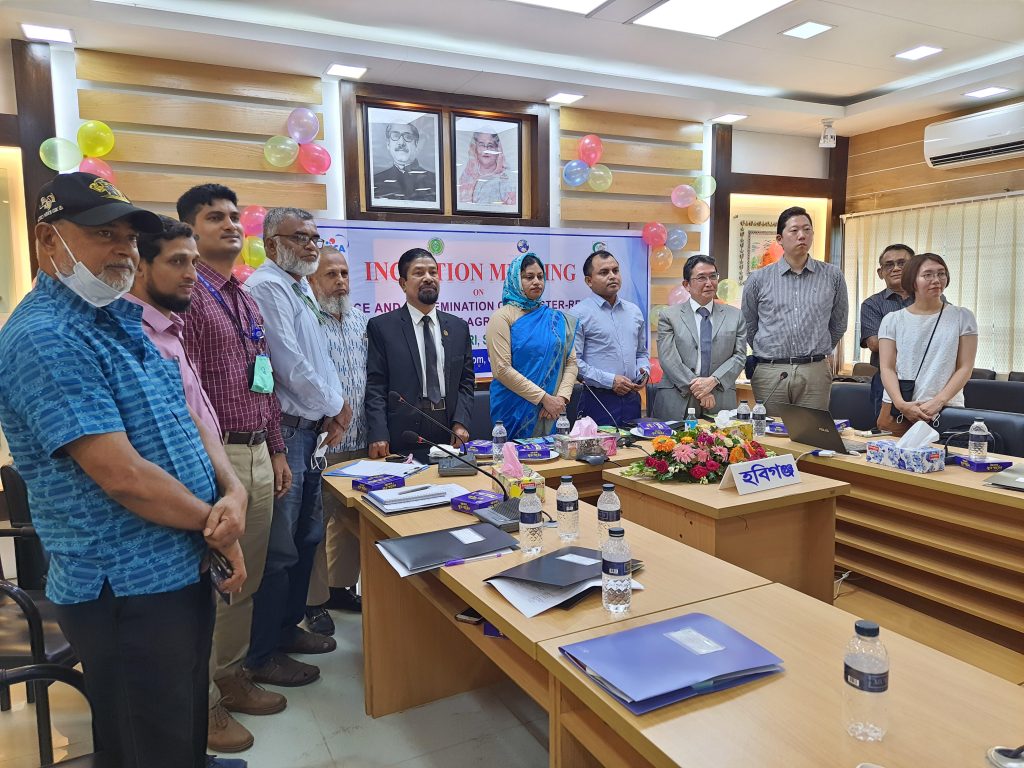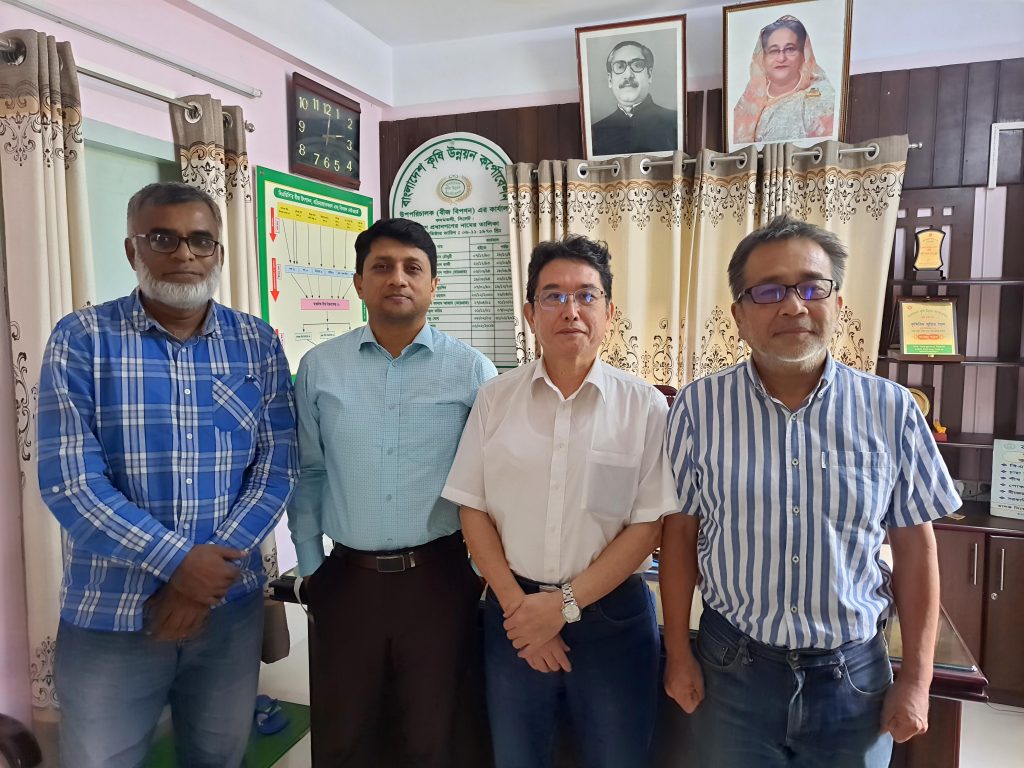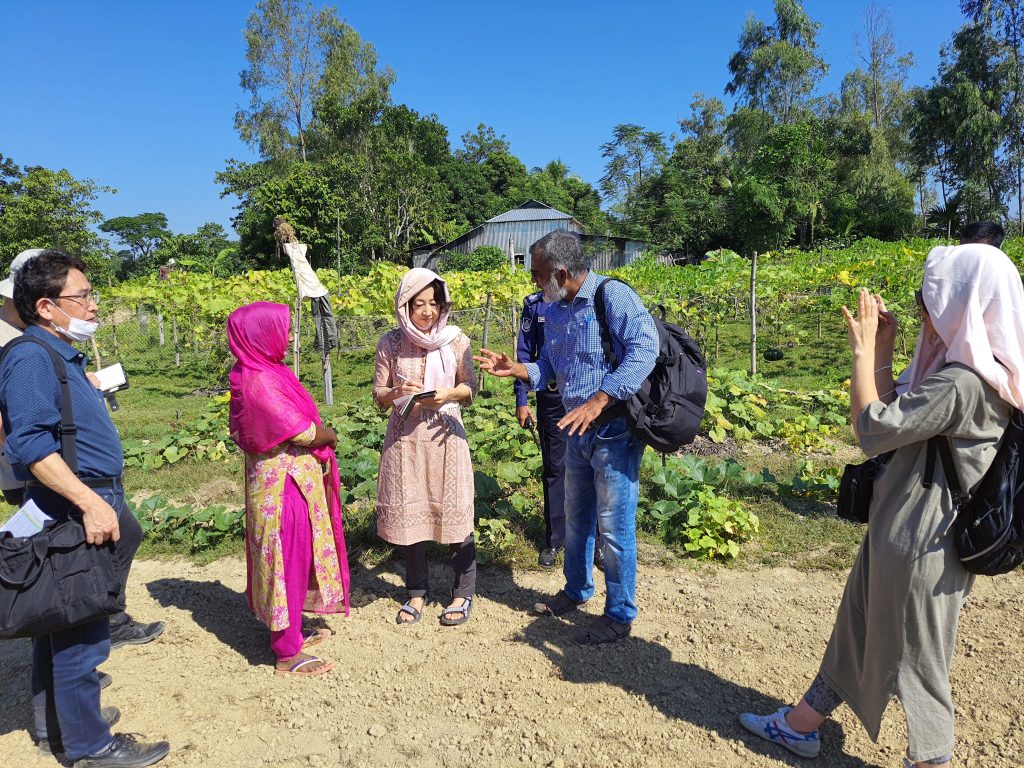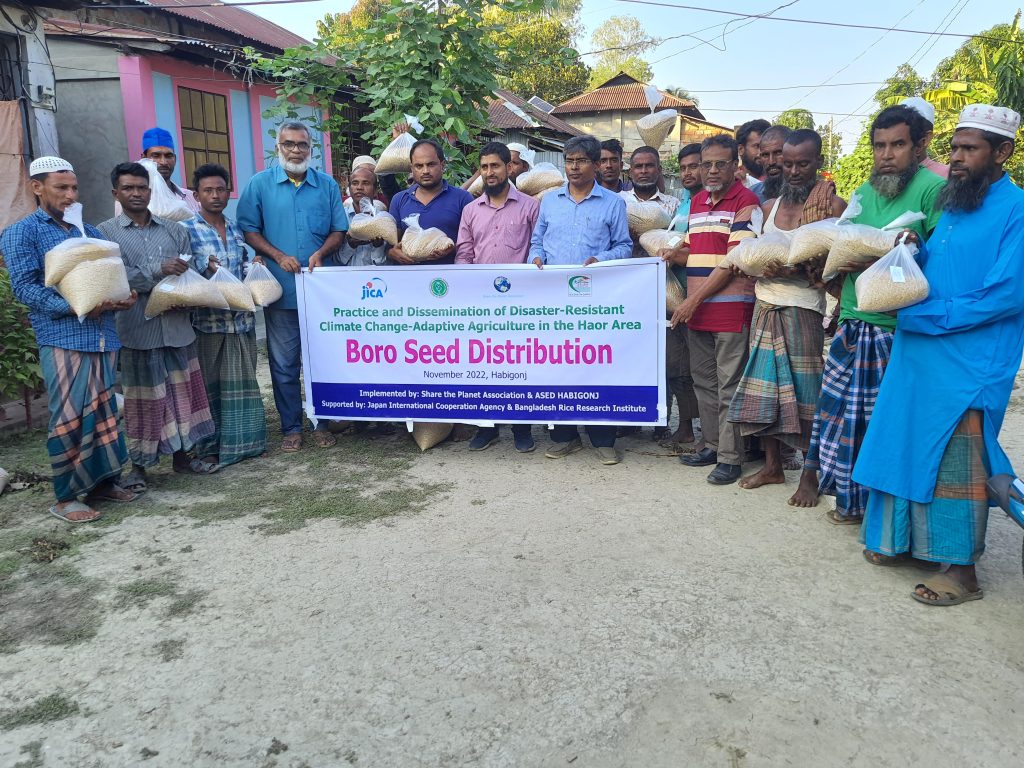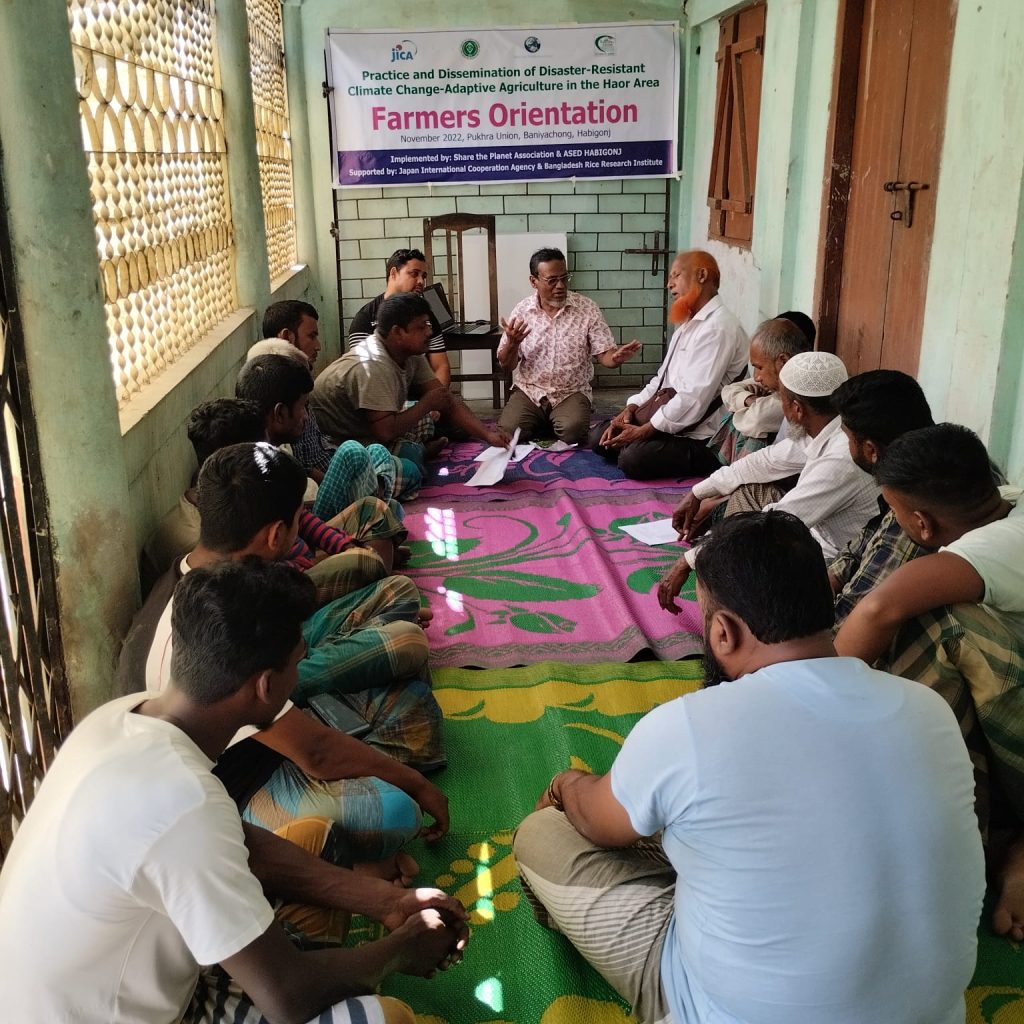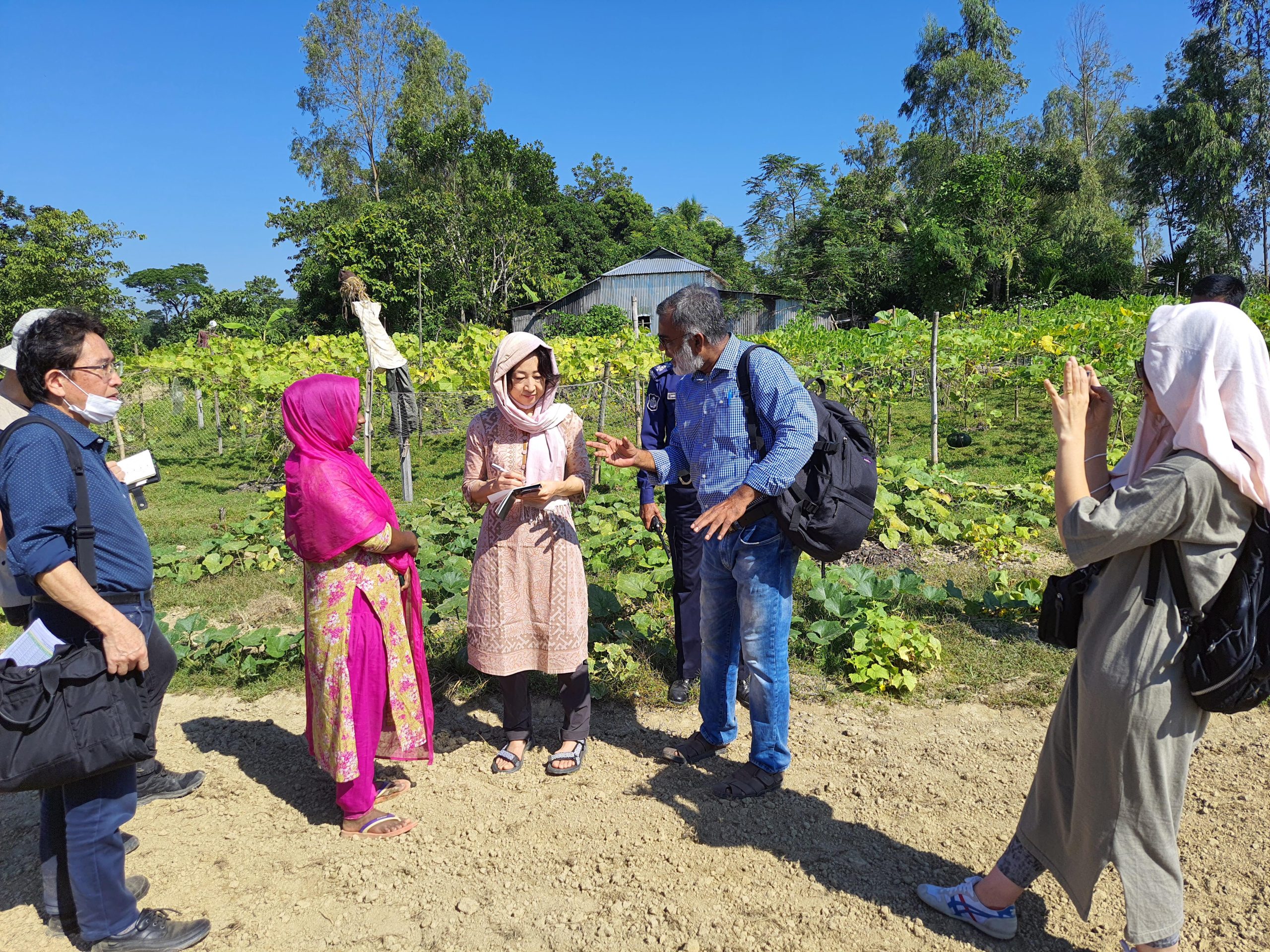This project is implementing with the joint support of Share the Planet Association- Japan, Japanese International Cooperation Agency (JICA) and Bangladesh Rice Research Institute (BRRI).
The project site is located in a large wetland called “Haor” in the upper reaches of the Meghna River in the northeastern part of Bangladesh (project site map: Figures 1 to 3 below). Haor has the geographical feature that during the rainy season, the entire area is flooded (about 8,600 square kilometers) by a seasonal flood and becomes a huge lake.
Residents have long been engaged in agriculture (one crop of dry season rice cultivation) and fisheries that take advantage of this feature. However, in recent years, frequent disasters such as cold weather, prolonged floods, and flash floods have caused great damage to rice cultivation. In addition, sedimentation of the whole haor has become a major problem due to the inflow of sediment that is thought to be caused by deforestation in the upstream region (India). Fisheries, another source of income for the inhabitants, are almost gone due to resource depletion. Dry season rice production at this haor accounted for one-sixth of the whole of Bangladesh at that time, and the catastrophic damage from the flash flood in 2017 pushed the rice price of Bangladesh to 20 to 40% (September 2017). Daily Star, March 30th).
In 2019, about 50 to 60% of rice will be damaged by widespread cold damage (Daily Manabjomin on April 9, 2019), which is a very vulnerable area to climate change and disasters. However, in the international community, information on these natural disasters is currently hidden behind the influence of the coronavirus, the Rohingya refugee problem from Myanmar, and even the landing of cyclones. Not recognized. In addition, the target region is a region in Bangladesh where development has been particularly delayed, and it is a region that is geographically and physically isolated and is left behind, where not only the international community but also the government and NGOs are hardly active.
The average infant mortality rate and under-five mortality rate in six of the seven provinces in the Haor region in the northeastern part of Bangladesh, excluding Bramonbaria, are 57 and 76 at the national average of 49, 64 and the average nutrition under 5 years. The rate of malfunction is as high as 46% at the national level of 43% (BDHS, 2007). In addition, the average literacy rate is very low at 37% at the national average of 54.8% (Ministry of Education, Bangladesh, 2010) These development indicators also show a delay in development in this region. In addition, there are many social and political issues, such as the operation of the irrigation system operated by the government in 2020 being stopped due to unpaid usage fees. As a result, the most vulnerable farmers are also facing difficulties due to human causes.
The impact of the new coronavirus in 2020 will be particularly serious in the Habigonj district where the activities are carried out, and the government of Bangladesh will respond on June 21, according to the infection risk announced on June 15, as a new countermeasure for new coronavirus infection. The details of zone classification and implementation of zone-based action regulations were announced, and the announcement of the red zone and the suspension of work in the area were notified. According to this, the Habigonj district is located in the “red zone” and is designated as one of the 10 most serious districts in 64 districts in Bangladesh. It is putting even more damage on the residents who are suffering from the disaster.
The target of this project is the farmers who were particularly badly hit by the flash flood in 2017 and the cold damage in 2019, and the project also has the aspect of supporting reconstruction.
